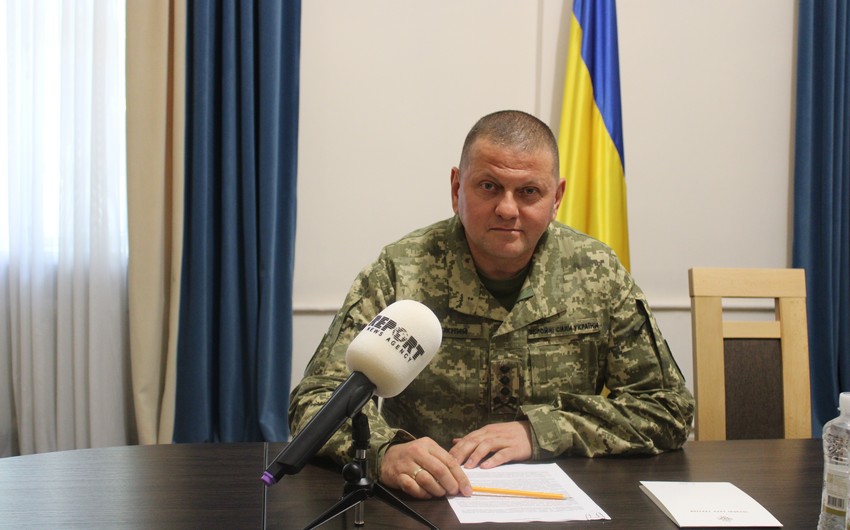Commander-in-Chief of the Armed Forces of Ukraine, General Lieutenant Valerii Zaluzhnyi, gave an interview to the Eastern Europe bureau of Report.
Which country ranks first in terms of technical equipment in the arsenal of the Ukrainian army? What is the level of modern technological training? Recently, we have read about the delivery of the Bayraktar drones from Turkey to Ukraine. Is this process expected to continue?
There is no doubt that we get the most significant assistance from the United States. At the same time, though the component of lethal weapons in this assistance is limited, the comprehensive support of Ukraine and its Armed Forces by the US government has a significant impact on the situation in our country and around it. It is very valuable, including as a clear message that Ukraine is not alone in resisting Russian aggression.
Within the international technical cooperation, since the beginning of 2014, we have already received weapons, military equipment, material and technical means worth more than $650 million, which are mainly high-tech and not produced by domestic enterprises, or are critically needed for us. This assistance made it possible to increase the ability to control units, electronic warfare, fight the enemy's unmanned and artillery weapons, and evacuate the wounded from the battlefield.
In addition, we received around $64 million in assistance for our Armed Forces from other countries.
As for operational-tactical unmanned aerial systems BAYRAKTAR TB2 of Turkish production, there are two such complexes, currently in service in the Armed Forces (12 aircraft) - one each in the Air Force and the Navy. At the same time, one complex was received under the state defense order this year.
Also, in addition to meeting the needs of the Armed Forces in 2021-2022, it is planned to purchase four more such complexes.
Besides, in the future, we plan to purchase unmanned aerial systems of this type of domestic production (Sokol-300 - once is development is complete).
As is known, in September-October 2020, the Azerbaijani army put an end to the occupation of 20 percent of the country’s territory in 44 days. How would you, as a commander-in-chief, assess the combat tactics of the Azerbaijani army?
The outcomes of the conflict testify to the thorough preparation of the Azerbaijani army and the effective use of troops directly in the course of hostilities, taking into account the negative experience of previous attempts to resolve the confrontation in its favor.
I would like to note several positive approaches and tactics in the actions of the units of the Azerbaijani army, namely:
the use of remote-controlled aircraft of the old fleet (An-2 type) to expose the forces and means of air defense of the Armenian side with the aim of their further destruction;
strikes against Armenia's air defense systems using drones of various types (attack drones of the BAYRAKTAR TB-2 type of Turkish production with high-precision missiles and bombs, Israeli-made HAROP kamikaze drones and some types of small-sized kamikaze drones) and barrage ammunition;
the use of UAVs to deliver pinpoint strikes against weapons and military equipment (tanks, infantry fighting vehicles, artillery, vehicles that transported ammunition) and critical military infrastructure (ammunition depots, fuels, and lubricants, etc.);
the use of surveillance and fire contours for effective detection and destruction of targets (means of missile forces and artillery and UAVs of various types);
the use of special operations forces in mountainous areas to capture critical areas (objects).
The Azerbaijani side received powerful technological support from Turkey.
At the same time, Armenia turned out to be unprepared for confrontation. Its defeat is due, in my opinion, to the lack of coordination in the construction of the air defense system and the mutual overlap of the SAM engagement zones;
low efficiency of the use of Soviet (Russian) air defense systems (S-300P, TOP-M2KM) to combat UAVs and, as a consequence, their defeat;
multiple use of individual weapons from only one firing position, which led to their rapid identification and destruction;
neglect of measures to camouflage military equipment and mislead the enemy.
Are you studying, in general, any nuances associated with the latest operations of the Azerbaijani army, and are you ready to apply them in army training?
Of course, we have thoroughly analyzed the experience of the Armenian-Azerbaijani conflict in all areas of the use of troops (forces).
In particular, in November last year, a large-scale event was held at the General Staff - the scientific-practical conference ‘The Armenian-Azerbaijani military conflict. Chronicle of events, analysis and conclusions.’
During this conference, problematic issues of the use of troops (forces) by the parties to the conflict, trends in the further development of forms and methods of using troops (forces) were discussed. In conclusion, substantiated proposals were prepared regarding the consideration of the advanced experience in various areas of activity of the Armed Forces of Ukraine, which are already being tested and introduced into the combat training of troops (forces).
In addition, lessons on the use of drones have been introduced into the curriculum and programs of higher military educational institutions. Also, six complex command and staff exercises were organized and conducted with military command bodies with the simultaneous use of Bayraktar drones, rocket troops, and artillery forces during the operation.


 https://static.report.az/photo/04e71593-54f9-36d7-891a-b00c7d6981be.jpg
https://static.report.az/photo/04e71593-54f9-36d7-891a-b00c7d6981be.jpg

